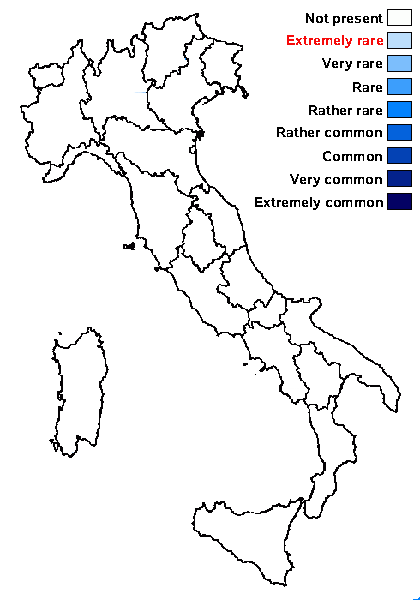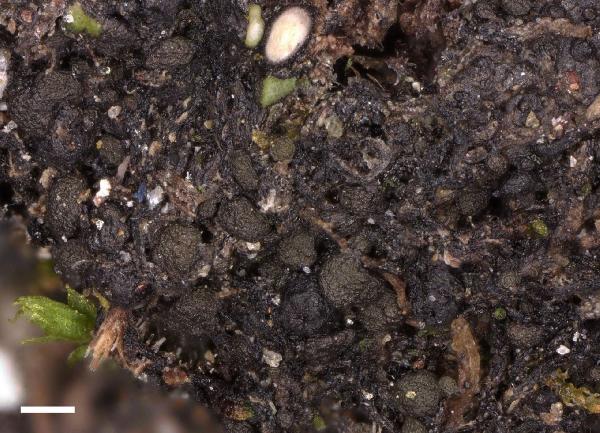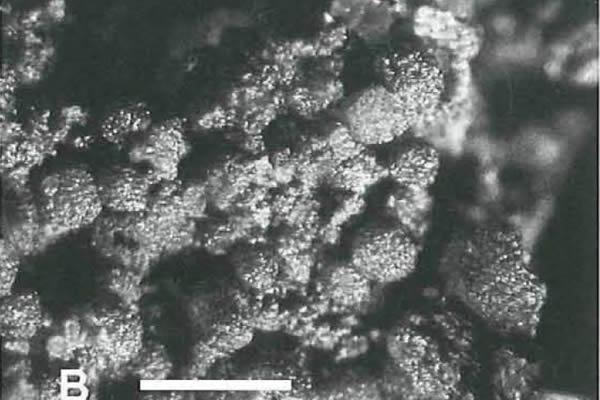Frigidopyrenia bryospila (Nyl.) Grube
Phyton, 45, 2: 308, 2005. Basionym: Verrucaria bryospila Nyl. - Flora, 47: 357, 1864
Synonyms: Arthopyrenia bryospila (Nyl.) Arnold; Collemopsidium bryospilum (Nyl.) Coppins; Pseudosagedia bryospila (Nyl.) Makar.; Pyrenocollema bryospilum (Nyl.) Coppins & H.F. Fox; Thelidium bryospilum (Nyl.) Blomb. & Forssell
Distribution:
Description: Thallus squamulose, the squamules up to 0.5 mm wide, flattened to bullate, dark olive-green to dark brown. Upper cortex pseudoparenchymatous; lower face of squamules connected to each other and to bases of ascomata by brown c. 5-7 µm wide hyphae with c. 1.5-2 µm thick walls. Perithecia black, globose to broadly pyriform, 0.4-0.45 mm across, seated amongst the squamules. Involucrellum absent; exciple dark brown throughout, 55-65 µm thick in upper part, 25-35 µm thick near the base, the cells in basal parts tangentially flattened, those in upper part more rounded, the pigment located in the intercellular spaces; hamathecium of strongly branched and anastomosing paraphysoids which are not constricted at septa, the cells 6-10 x c. 1 µm. Asci 8-spored, cylindrical. unitunicate, rigid, the endotunica layers becoming thicker towards the top but without abrupt thickening in the upper half of the ascus, the ocular chamber distinct, 130-140 x 18-22 µm. Ascospores 1-septate, hyaline turning brownish and faintly warted when old, oblong-ellipsoid, (25-)28-44 x 8-12 µm. Photobiont cyanobacterial, chroococcoid, the cells 4-5(-8) x 3-4 µm, thin-walled. Spot tests: all negative. Chemistry: without lichen substances.Note: a circum-arctic-alpine species found on soil and plant debris above treeline, known from a few localities only in the Alps, outside Italian territory. To be looked for in the Italian Alps.
Growth form: Squamulose
Substrata: soil, terricolous mosses, and plant debris
Photobiont: cyanobacteria, coccaceous (e.g. Gloeocapsa)
Reproductive strategy: mainly sexual

Predictive model
Growth form: Squamulose
Substrata: soil, terricolous mosses, and plant debris
Photobiont: cyanobacteria, coccaceous (e.g. Gloeocapsa)
Reproductive strategy: mainly sexual

Predictive model



